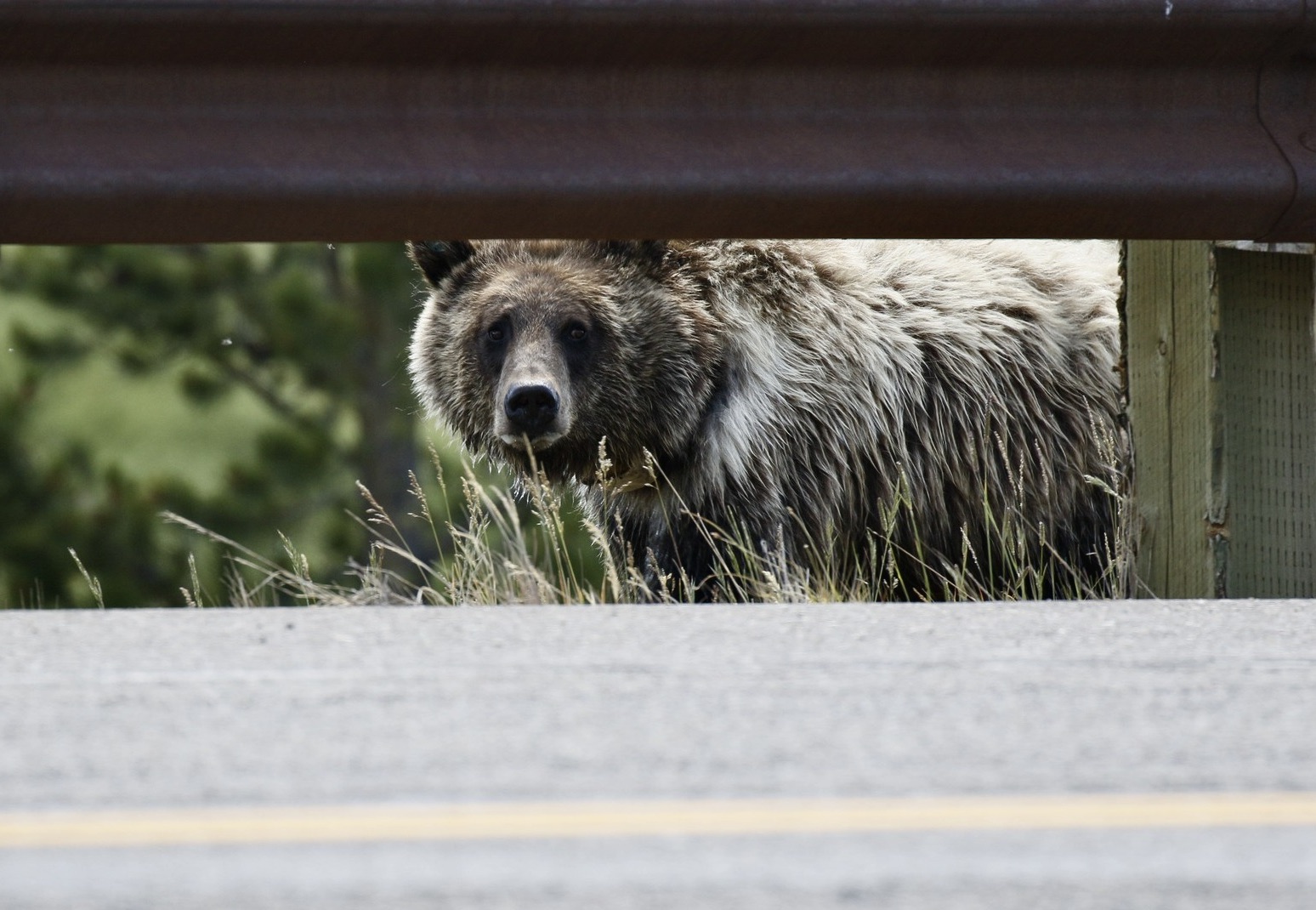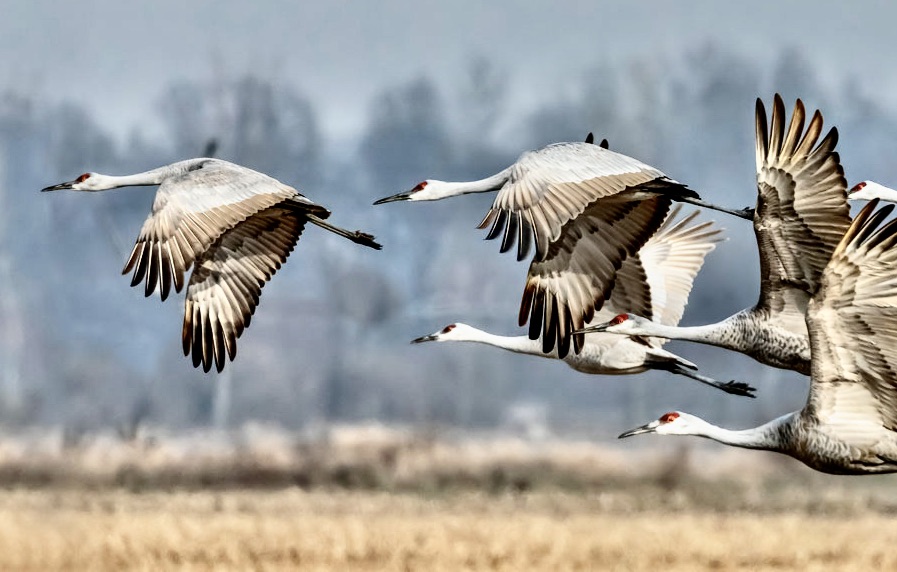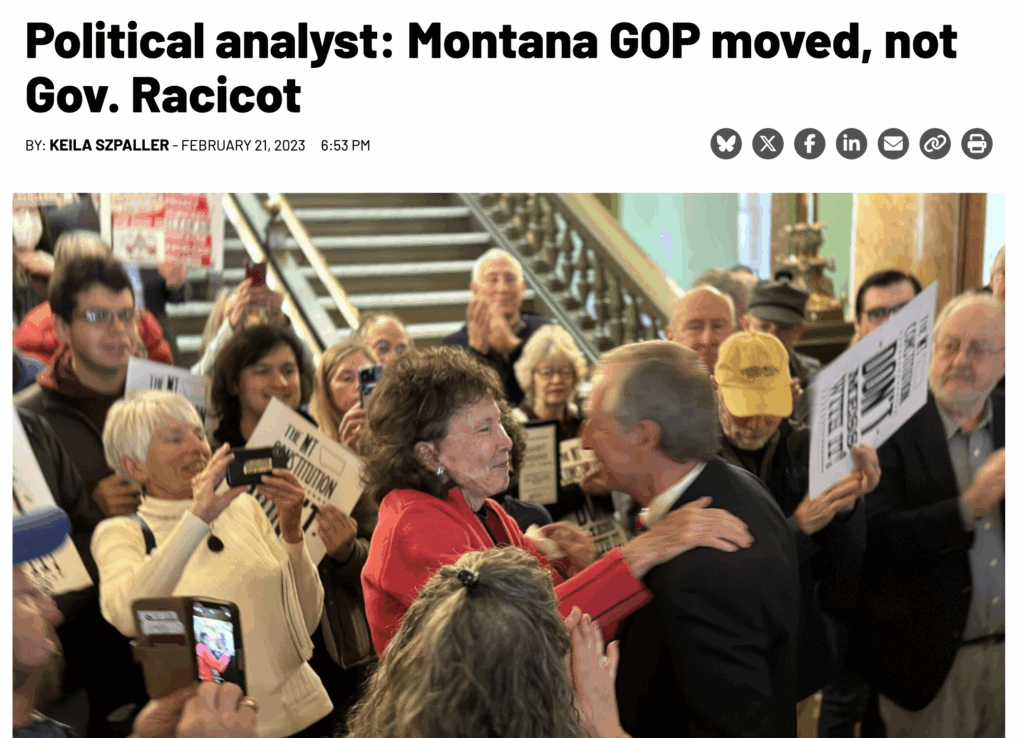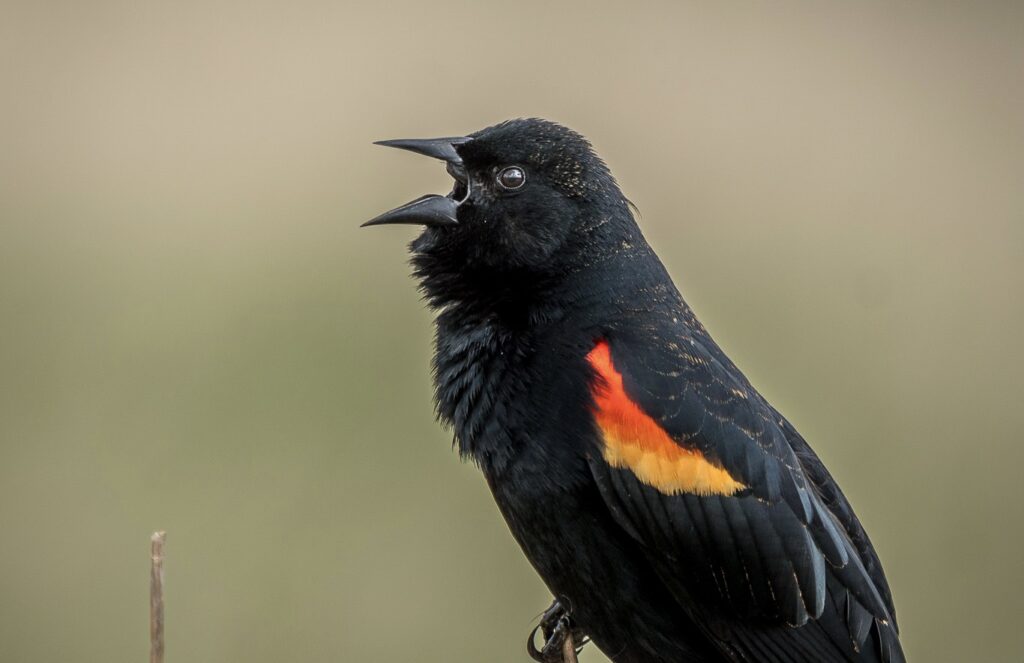EDITOR’S NOTE: For decades, Luther Propst has been a thought leader in confronting vexing issues related to “the New West”—in particular, how can places betting their economic future by providing access to nature and recreational amenities grow in ways that protect the priceless natural assets drawing humans to them? Propst today is an elected member of the Teton County, Wyoming Commission which places him at the epicenter of tensions related to growth, sprawl, affordable housing and protecting wildlife, The piece below is an excerpt from a chapter he wrote for a new multi-author book, A Watershed Moment: The Americana West in an Age of Limits that is creating a national buzz. We strongly recommend readers add it to their bookshelf. The volume is co-edited by Propst, Evelyn Brister and Robert Frodeman.The essay below has earned praise as a call to action for what Greater Yellowstone—citizens, elected officials, land managers, NGOs and business community—must urgency do to protect its ecological essence from ruin. But it has implications for many other mountain towns and valleys.
By Luther Propst
Motorists driving over northwestern Wyoming’s Teton Pass climb some two thousand feet in elevation from the valley floor of Jackson Hole, encountering steep grades, hairpin turns, and plummeting drop-offs along the way. It can be a white-knuckle trip in the summer; in the winter, driving Wyoming Highway 22—one of the snowiest stretches of highway in the lower 48—is downright harrowing, plagued by avalanches, high winds, and snow-tire-defying black ice.
And yet, on any given morning, even during a February blizzard, a relentless stream of headlights heading east snakes up the pass from Idaho. The cars and trucks that then descend into the valley below belong to teachers, carpenters, firefighters, electricians, baristas, and nurses. Every day, they make this forty-five-minute-plus commute from Victor or Driggs, Idaho—or even farther afield. Some of these workers will earn $60, $80, even $100 per hour for their labors. But it’s still not enough to afford to buy or rent even the humblest housing in Jackson, where in 2022, the average price for a single-family home topped $5 million.
It’s been four decades since a median-income Jackson Hole household could afford a median-priced house. The Covid-19-exacerbated “Zoom Boom”—an out-migration of highly paid remote workers from cities into mountain towns, resort areas, and national park gateway communities—widened the long-growing gap between wages and housing. It quickly transformed Teton County’s long-standing housing crunch into a full-blown crisis.

The Zoom Boom was more than matched by the continued growth in the number of wealthy retirees, second-home (and multiple-home) owners, and the überrich taking advantage of Wyoming’s low state taxes, which are highly favorable for protecting wealth.
In addition to a housing crisis, Teton County’s popularity as a place to visit has further inflamed commuter traffic congestion over Teton Pass—and along the thirty-five-to-seventy-mile commute up the Snake River Canyon from Alpine and Star Valley, Wyoming. In a futile attempt to alleviate congestion, the Wyoming Department of Transportation recently expanded the highway south of Jackson to the Snake River Canyon from two to five lanes. This has sped up traffic and made the highway even more deadly for wildlife and people who live in neighborhoods south of town. Famed Jackson Hole Grizzly 399 was struck on killed on a highway a few dozen miles south of Jackson.
These phenomena aren’t unique to Teton County. Aspen’s gardeners and restaurant workers and even lawyers and doctors face a daily commute as much as two hours from down-valley communities such as Glenwood Springs and Rifle, Colorado. The folks who build and tend to the palatial homes in Telluride and Mountain Village—often occupied for only a few weeks each year—traverse a mountain pass and a narrow, windy road from Montrose and Delta. Sedona’s hotel-room cleaners make their way up the red rock from Cottonwood and Verde Valley. And now even former bedroom communities are becoming too costly for the average worker, forcing them to drive ever farther to find housing.
But Jackson Hole—the spectacular valley east of the Tetons—is in a league of its own. Teton County residents have the highest per-capita income in the country, and the gap between total income and average wages is wider than anywhere else—even wider than in Manhattan. Except for a relatively small number of deed-restricted and subsidized affordable houses, even well-paid workers can’t afford the cheapest homes—with luck, $650,000 might purchase a hotel-room-sized condominium. At the same time, Teton County needs ever more workers to staff high-end restaurants, build new mansions, clean and maintain luxury short-term rental units, and provide a wide range of goods and personal services to tourists, retirees, highly paid remote workers, and second-home owners.
Ninety-seven percent of Teton County is public land—including Grand Teton National Park, nearly half of Yellowstone National Park, the massive Bridger Teton National Forest, and the National Elk Refuge. The result is a striking imbalance between the number of jobs in the community—tourism, personal services, construction, health care, and increasingly wealth management and finance—and the land available to build housing for those workers.
Teton County has a classic distorted housing market in which demand far exceeds the ability of the market to provide housing. As a result, Teton County exports a growing number of workers into its sprawling, fingerlike “commutershed,” the area or landscape traveled by workers who do not live in the community where they work. To the west, workers routinely commute from not only Victor (24 miles) and Driggs (32 miles) but also Rexburg (80 miles). To the south, they drive from Alpine (37 miles) and Afton (69 miles). And to the southeast, they come from Bondurant (30 miles) and Pinedale (77 miles).
This dynamic produces several unfortunate consequences: the expense and wasted time of a long commute, wildlife-vehicle collisions, traffic congestion, greenhouse gas emissions, air pollution, unattractive wildlife fencing lining our highways, social segregation, and the creation of communities (especially in neighboring Teton County, Idaho) that can’t generate the tax revenue required to meet basic public services.
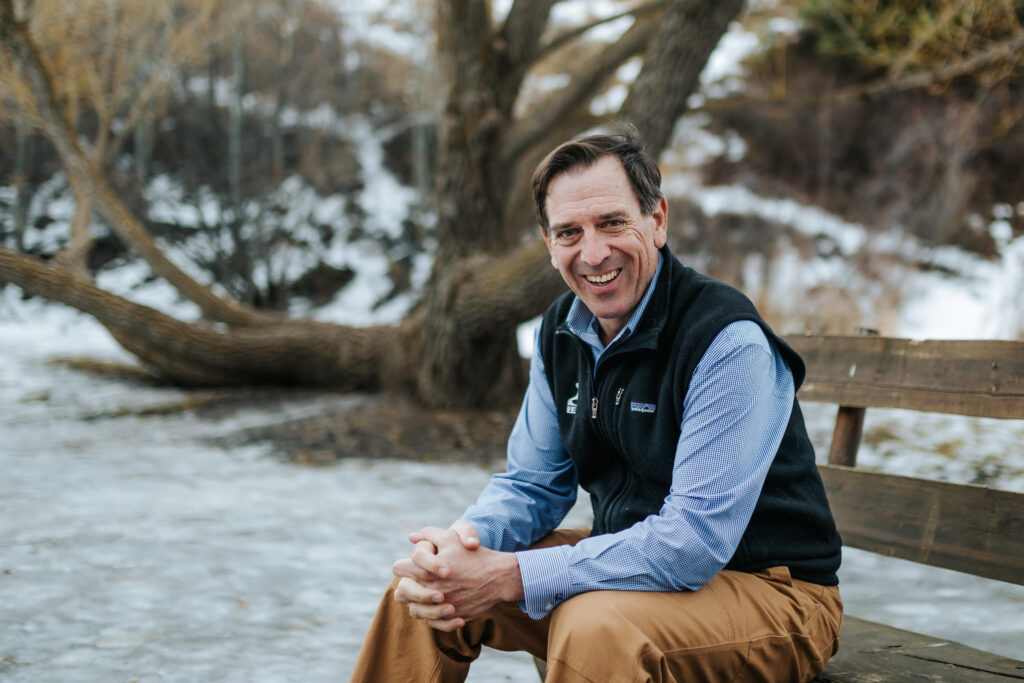
Local leaders often contend that the situation is beyond their control, which is partly accurate. They can’t ban wealthy people from moving to the community or spending $5 million or $25 million on a vacation home. The crisis is indeed exacerbated by several federal, state, and local-level decisions and policies. For example, due largely to the tax revenue and royalties from rich low-sulfur coal deposits, Wyoming has the most favorable state tax code in the United States for preserving wealth, creating one of the world’s most scenic tax havens and luring billionaires with its “cowboy cocktail” of finance and tax laws.
Teton County has an extraordinary history of conservation leadership, especially when it comes to protecting public lands. In the 1920s, John D. Rockefeller Jr. acquired some 220,000 acres across the foothills and valley east of the Tetons. After many battles with local opponents, in 1943, he transferred the land to the federal government to later be added to Grand Teton National Park. Since this gift to the public, private landowners have protected much of the balance of the county’s private land under conservation or agricultural easements.
The Rockefeller family also maintained the JY Ranch until 2007 as a family retreat within the national park. This high-profile summer retreat may have contributed to the growing popularity of the area as a summer retreat (and later winter ski playground) for the wealthy. On the other side of the coin, after strong initial opposition, local landowners and leaders realized that tourism could provide the foundation for a prosperous economy.
Over the last seventy years, they have successfully promoted large-scale, year-round tourism, second-home ownership, and retirement living for outdoor folks. At the same time, they have by and large failed to address, until recently, housing for the workers that such growth demands. Today this creates a Dr. Jekyll and Mr. Hyde approach to local land use and conservation: land conservation limits the supply of land for affordable housing, and strong national and even global demand raises the price of housing while the growth economy generates robust numbers of new jobs. It also dampens the political will to implement meaningful policies to address the problem.
By the late 1970s, local conservation advocates were beginning to see that the relative absence of the extractive industries of the Old West had paradoxically opened Teton County up to New West problems. Rural sprawl, affordable housing shortages due to the vast imbalance between wages and cost of living, wealth inequality, traffic congestion, and unprecedented levels of tourism were proving to be every bit as threatening to the wildlife, water quality, ecosystem health, and community character as what the late Western scholar Charles Wilkinson labeled the “Lords of Yesterday”—mining, oil and gas, and logging.
Out-of-towners bought and fixed up old miners’ shacks. Subdivisions and “ranchettes” sprawled across former cattle pastures and prime wildlife habitat. Spurred by the times and the lyrics of John Denver, many disaffected young adults moved to Western mountain towns—seeking a “Rocky Mountain High” and staying to sell real estate (Teton County, population 25,000, has 700 realtors). Short-term profit outbid long-term vision.
Subdivisions and “ranchettes” sprawled across former cattle pastures and prime wildlife habitat. Spurred by the times and the lyrics of John Denver, many disaffected young adults moved to Western mountain towns—seeking a “Rocky Mountain High” and staying to sell real estate. Teton County, population 25,000, has 700 realtors. Short-term profit outbid long-term vision.
With no community vision and lax local land use regulations, new development ignored traditional architecture, building in the mold of what they thought newcomers would want. And the newcomers started businesses—not only selling real estate but also opening restaurants, building new houses, starting white-water raft companies, teaching visitors to ski, guiding for trout—thereby drawing more folks like themselves. This marked the birth of fully integrated amenities economies across the West.
Teton County’s population more than tripled between 1970 and 2000 (from 5,000 to 17,000), with development following apace. Initially, most of the growth was within Jackson, the county’s population center and only incorporated municipality, and along nearby highways. But second-home owners would pay a premium for the “wilder” areas, especially near Jackson Hole Mountain Resort or adjoining the national forest, where they knew that the next wave of newcomers’ homes would not sully their views.
From Wendys to Albertsons, from McDonalds to big-box retail stores, corporate chains displaced the old mom-and-pop shops. More recently, international banks have displaced chain restaurants and convenience stores. High-end art galleries, clothing stores, coffee shops, restaurants, and interior decorators—along with real estate offices, of course—have replaced the greasy spoons, hardware stores, and bars downtown. This in turn has attracted more tourists and part-time residents, who have found comfort in the familiar. Most of the relatively scant acreage of private land not under conservation easement has been gobbled up by development, causing land and housing prices to skyrocket. At the same time, the burgeoning commercial sector requires more and more often-seasonal, low-wage workers to prepare dinners, whip up espressos, clean hotel rooms, and service the mansions.
The ethic to protect public lands and the efforts among private ranchers to protect agricultural and conservation easements often do not extend to local land use decisions. As a result, efforts are inadequate to protect Jackson’s Western heritage and ensure that public services and housing affordable to local workers remain in balance with development. State leaders, meanwhile, do all they can to promote growth in Teton County. This includes fashioning friendly tax and finance laws to lure the ultrarich.
The ethic to protect public lands and the efforts among private ranchers to protect agricultural and conservation easements often do not extend to local land use decisions. As a result, efforts are inadequate to protect Jackson’s Western heritage and ensure that public services and housing affordable to local workers remain in balance with development. State leaders, meanwhile, do all they can to promote growth in Teton County. This includes fashioning friendly tax and finance laws to lure the ultrarich.
In 1980, the Jackson Hole Alliance for Responsible Planning (now the Jackson Hole Conservation Alliance) formed to stop the development of a shopping center adjoining Grand Teton National Park in Kelly, Wyoming. They were successful, as were their later efforts to block other egregious proposals, such as a waterslide park across the highway from the National Elk Refuge in the late 1980s and a grizzly bear theme park in the early 1990s.
But conservationists weren’t nearly as successful in preventing the incremental but ubiquitous development of high-end residential properties for second homes, retirees, and remote workers. Nor have they managed to stop the continued development of high-end hotels and luxury short-term rentals or slowed the widening gap between the average price of a home and the average local income.
Likewise, with the tremendous financial return from luxury development, they have been unable to convert proposals for high-end housing or lodging into workforce housing. Instead, recent additions include new amusements, such as zip lines and alpine coasters. Local government, by and large, has shown little effective interest in policies and regulations that would restrict all-out development.
Demand for high-end real estate has skyrocketed, and the population of multimillionaires and billionaires has shot up as well. But it’s not just Jackson Hole. The cost of living in Jackson’s former bedroom communities—Driggs, Victor, Alpine, Hoback, even Pinedale—is getting ever more pricey.This causes Jackson’s commutershed to expand further out into the region, leading to more traffic, wildlife-vehicle collisions, and emissions. Commuting directly lowers the quality of life for the people who commute and contributes to the deterioration of the very amenities that draw new residents.
Onw of the most desirable, spectacular wildlife-rich regions on the planet is now in full-on crisis mode. The 20 counties of the Greater Yellowstone region have had little regional or systemic success addressing the myriad threats posed by our now global economy. Mitigating the impacts of amenity-driven growth on Teton County—and increasingly on counties all around Greater Yellowstone—requires a robust and multifaceted regional approach. Otherwise, the region will continue to lose both the wildlife and natural values for which it is known globally and the distinctive unconventional outdoor vibe that has long distinguished mountain towns from cities and suburbs.
The political will to make meaningful regional—or even local—changes in growth policy is lacking. The 2020 joint Teton County–Jackson Comprehensive Plan starts with an inspiring vision statement: “To preserve and protect the area’s ecosystem to ensure a healthy environment, community and economy for current and future generations.” This lofty vision is often repeated but only sporadically followed.
The political will to make meaningful regional—or even local—changes in growth policy is lacking. The 2020 joint Teton County-Town of Jackson Comprehensive Plan starts with an inspiring vision statement: “To preserve and protect the area’s ecosystem to ensure a healthy environment, community and economy for current and future generations.” This lofty vision is often repeated but only sporadically followed.
Several factors undermine the political will for decisive change, including a shared memory of the area’s history of poverty, isolation, and a highly volatile seasonal economy; well-funded, cynical, and sophisticated developers and their consultants; and a population that is too tired, overworked, distracted, or disenchanted to press for solutions. Political will to protect community values is sparse in both Teton County and other counties in Greater Yellowstone.
For example, Gallatin County, Montana, home to Bozeman, is about half private land. It has a relatively modest amount of acreage under conservation easement and has seen rapid, sustained population and economic growth for years. Growth is both sprawling outward across the countryside and rebuilding downtown Bozeman with increased density. Even if the county or local municipalities were to attempt to effectively manage growth, they would run into Montana’s anticonservation and anticommunity state politics. State legislators have recently passed legislation that preempts local control and local authority to protect natural resources
Public land managers in the Greater Yellowstone region, through the Greater Yellowstone Coordinating Committee, have done a credible job promoting regional cooperation for protecting the region’s national parks, national forests, wildlife refuges, and public lands. But no such leadership for addressing community development and sprawling growth is foreseeable in Greater Yellowstone. It’s up to nonprofit advocacy organizations to catalyze such leadership on community development matters.
For Jackson Hole and surrounding communities, the key to combating overdevelopment does not lie in better environmental or biophysical science, more sophisticated land use planning tools or scenarios, or more thorough social and economic analysis. Rather, the limiting factor is a deeply ingrained societal commitment to perpetual growth and the dearth of political will and community engagement at the local and state levels to question this commitment.
Coming soon: If Greater Yellowstone is going to protect, preserve and sustain its status in the world as a beacon for landscape conservation, Propst believes six key policy priorities must be pursued but the window to achieve meaningful success is rapidly closing. Meantime, you can get a sneak peak by picking up a copy of A Watershed Moment. Also note, if you care about saving the natural character of southern Jackson Hole. On Tuesday, March 4 from 5:30 to 8 pm in the lobby of the Jackson Hole Center for the Arts you are invited to a free public event featuring renowned national planning expert Robert Liberty speaking about growth and wildlife issues. It is hosted by the Jackson Hole Conservation Alliance. Food and refreshments provided.

